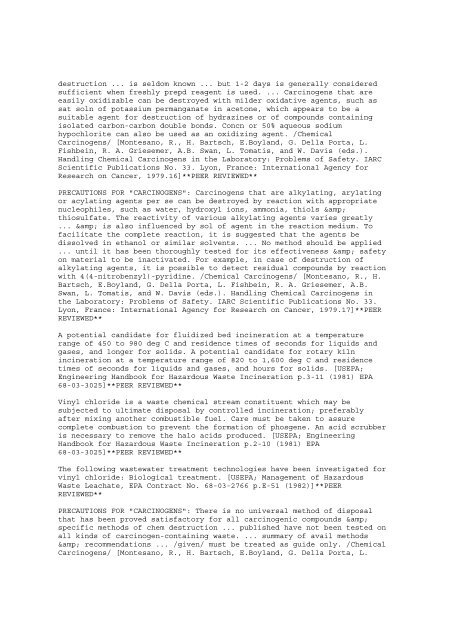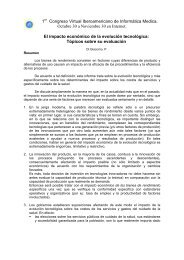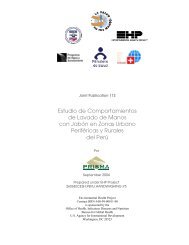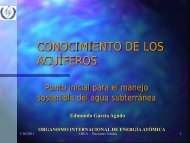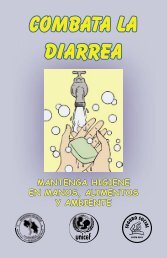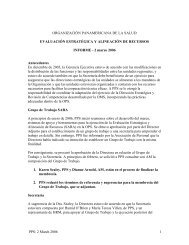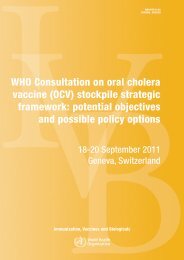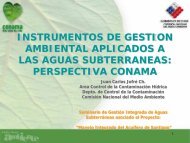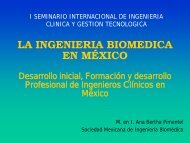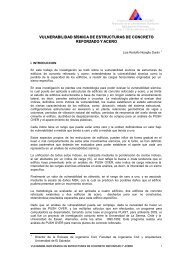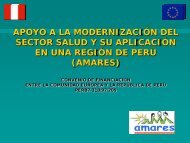a database of the National Library of M
a database of the National Library of M
a database of the National Library of M
You also want an ePaper? Increase the reach of your titles
YUMPU automatically turns print PDFs into web optimized ePapers that Google loves.
destruction ... is seldom known ... but 1-2 days is generally consideredsufficient when freshly prepd reagent is used. ... Carcinogens that areeasily oxidizable can be destroyed with milder oxidative agents, such assat soln <strong>of</strong> potassium permanganate in acetone, which appears to be asuitable agent for destruction <strong>of</strong> hydrazines or <strong>of</strong> compounds containingisolated carbon-carbon double bonds. Concn or 50% aqueous sodiumhypochlorite can also be used as an oxidizing agent. /ChemicalCarcinogens/ [Montesano, R., H. Bartsch, E.Boyland, G. Della Porta, L.Fishbein, R. A. Griesemer, A.B. Swan, L. Tomatis, and W. Davis (eds.).Handling Chemical Carcinogens in <strong>the</strong> Laboratory: Problems <strong>of</strong> Safety. IARCScientific Publications No. 33. Lyon, France: International Agency forResearch on Cancer, 1979.16]**PEER REVIEWED**PRECAUTIONS FOR "CARCINOGENS": Carcinogens that are alkylating, arylatingor acylating agents per se can be destroyed by reaction with appropriatenucleophiles, such as water, hydroxyl ions, ammonia, thiols &thiosulfate. The reactivity <strong>of</strong> various alkylating agents varies greatly... & is also influenced by sol <strong>of</strong> agent in <strong>the</strong> reaction medium. T<strong>of</strong>acilitate <strong>the</strong> complete reaction, it is suggested that <strong>the</strong> agents bedissolved in ethanol or similar solvents. ... No method should be applied... until it has been thoroughly tested for its effectiveness & safetyon material to be inactivated. For example, in case <strong>of</strong> destruction <strong>of</strong>alkylating agents, it is possible to detect residual compounds by reactionwith 4(4-nitrobenzyl)-pyridine. /Chemical Carcinogens/ [Montesano, R., H.Bartsch, E.Boyland, G. Della Porta, L. Fishbein, R. A. Griesemer, A.B.Swan, L. Tomatis, and W. Davis (eds.). Handling Chemical Carcinogens in<strong>the</strong> Laboratory: Problems <strong>of</strong> Safety. IARC Scientific Publications No. 33.Lyon, France: International Agency for Research on Cancer, 1979.17]**PEERREVIEWED**A potential candidate for fluidized bed incineration at a temperaturerange <strong>of</strong> 450 to 980 deg C and residence times <strong>of</strong> seconds for liquids andgases, and longer for solids. A potential candidate for rotary kilnincineration at a temperature range <strong>of</strong> 820 to 1,600 deg C and residencetimes <strong>of</strong> seconds for liquids and gases, and hours for solids. [USEPA;Engineering Handbook for Hazardous Waste Incineration p.3-11 (1981) EPA68-03-3025]**PEER REVIEWED**Vinyl chloride is a waste chemical stream constituent which may besubjected to ultimate disposal by controlled incineration; preferablyafter mixing ano<strong>the</strong>r combustible fuel. Care must be taken to assurecomplete combustion to prevent <strong>the</strong> formation <strong>of</strong> phosgene. An acid scrubberis necessary to remove <strong>the</strong> halo acids produced. [USEPA; EngineeringHandbook for Hazardous Waste Incineration p.2-10 (1981) EPA68-03-3025]**PEER REVIEWED**The following wastewater treatment technologies have been investigated forvinyl chloride: Biological treatment. [USEPA; Management <strong>of</strong> HazardousWaste Leachate, EPA Contract No. 68-03-2766 p.E-51 (1982)]**PEERREVIEWED**PRECAUTIONS FOR "CARCINOGENS": There is no universal method <strong>of</strong> disposalthat has been proved satisfactory for all carcinogenic compounds &specific methods <strong>of</strong> chem destruction ... published have not been tested onall kinds <strong>of</strong> carcinogen-containing waste. ... summary <strong>of</strong> avail methods& recommendations ... /given/ must be treated as guide only. /ChemicalCarcinogens/ [Montesano, R., H. Bartsch, E.Boyland, G. Della Porta, L.


